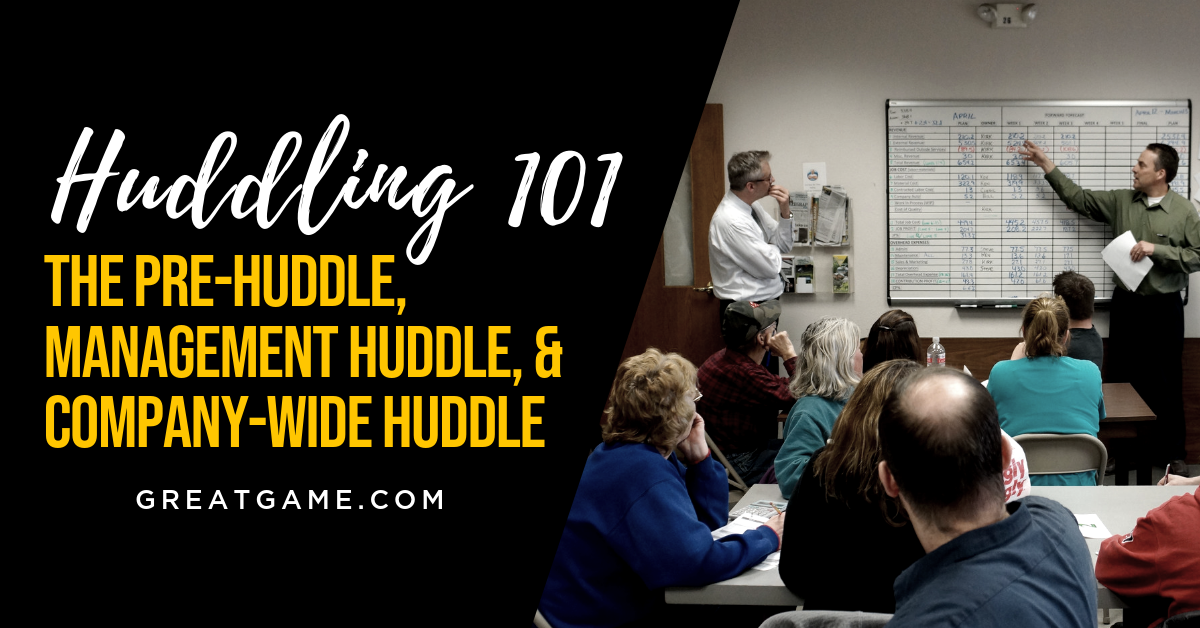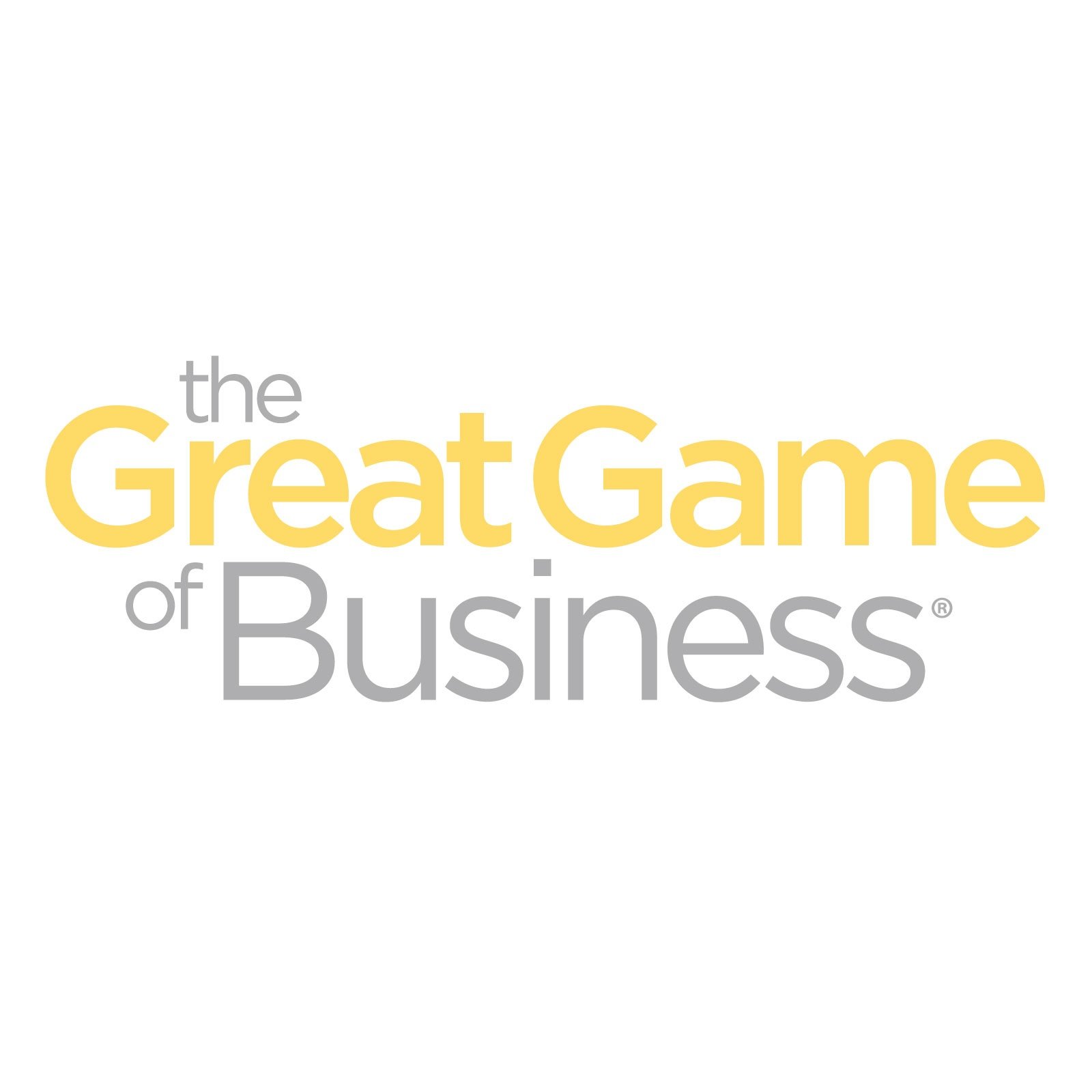
A workplace Huddle is more than just a staff meeting. Discussing the financials and critical elements of your business is a vital part of the Great Game of Business®, but more importantly, the Huddle is an opportunity to focus on the people responsible for those numbers and the story behind the numbers.
In the Huddle Cycle, numbers are forecast and shared in a series of meetings from daily departmental check-ins to weekly company-wide gatherings, driving employee engagement and serving as a self-correcting measure to keep the company on the path toward achieving its goals. To better understand what's involved in creating a Huddle rhythm, let's break down the three main types of workplace Huddles: the Pre-Huddle, the Management Huddle, and Company-Wide Huddle.
1. The Pre-Huddle
The Pre-Huddle is the first of three Huddles in the Huddle Cycle where the team reviews workgroup performance, develops a financial forecast from operational performance, and prepares to communicate this information with the company. This step is essential to ensure employees understand their numbers, the stories behind those numbers, and are prepared to share how they are impacting The Game and answer questions from the other staff. Here, your workgroup will:
1. Evaluate Game Conditions: share the big picture – where the company is headed, threats, opportunities, how the team is progressing on their goals.
2. Check the Score: Communicate the big picture financial outlook for the company and share the stories behind the numbers. Highlight and discuss the wins and losses and how each individual can influence the numbers in the future.
3. Plan the Next Play: Determine what plays the team must run to improve the score and make sure the players have what they need to successfully run that play. Employees should walk away able to answer this question: What is the single most important thing I can do this week to improve the score?
4. Get Fired Up: Recognize and celebrate every win, big or small. Nothing fires up players more than being recognized and appreciated for a job well done – or a game well played.
The Pre-Huddle provides an ideal forum to discuss the specific needs of the team. Focus on:
- Ideas: What are your suggestions for improvement?
- Roadblocks: Where are you stuck? What can the team do to help?
- Lessons Learned: What have you learned that should be shared with everyone?
Pre-Huddle Example:
2. The Management Huddle
The second step of the Huddle Cycle is the Management Huddle. This meeting takes place after company Pre-Huddles and provides a structure for information to be communicated through the company in a bottom-up fashion.
The Management Huddle addresses the challenges and opportunities each department is facing. Teams who communicate information across various departments are less likely to encounter surprises, are better problem-solvers, and are more successful at adapting to change.
The format for the Management Huddle closely mirrors the structure of the Pre-Huddle:
1. Evaluate The Game conditions: discuss the updates from individual departments.
2. Check the score: review each department’s Critical Number™; discuss any positive or negative variance from plan.
3. Plan the next play: address any changes that need to be made in order to correct weaknesses or pursue opportunities.
The information gathered during the Management Huddle will prepare the management team for the third and final workplace Huddle in the Huddle Cycle.
Management Huddle Example:
3. The Company-Wide Huddle
This final Huddle is important because it gives all employees visibility to the portions of the business they do not see on a day-to-day basis. This meeting opens the lines of communication and keeps all employees informed about the overall status of the company.
The Company-Wide Huddle serves as a venue to educate employees on various aspects of the business and provides an opportunity for employees to ask questions. Some tips to keep in mind:
- Provide Game binders to the employees that include all the GGOB information they need to follow the progress of The Game, including the annual business plan, Huddle scoreboards, bonus plan and business/financial glossary of terms, training bites etc. This provides a central place to store all the information they need to follow the action of The Game.
- Each month, provide employees a blank scoreboard so they can track, measure, and report information during each weekly Huddle. The simple act of writing the numbers down will not only keep everyone engaged and involved, but it will also have a dramatic effect on the employees’ ability to remember and understand the numbers. Try it… it works!
- Most of all, make it interesting and fun to keep all employees involved. Provide small incentives to employees or their teams to answer questions or make the calculations on the scoreboard. Try to include small games or brief training bites to reinforce your financial and business literacy efforts.
Company-Wide Huddle Example-
Now that you have the foundation for these three main types of Huddles, we've got these tools and resources to take you Huddles to the next level:
- The Huddle Checklist
- Four Essential Items to Cover During a Huddle
- Dispersed: Huddling in Multiple Locations and Languages
- The Huddle: Where the Action Happens (Even Virtually)
- The Do's and Dont's of an Outstanding Huddle
Learn more Huddling tips, tricks, and best-practices from experienced Great Game practitioners at the world's largest open-book conference next September.
.png)












.png)

